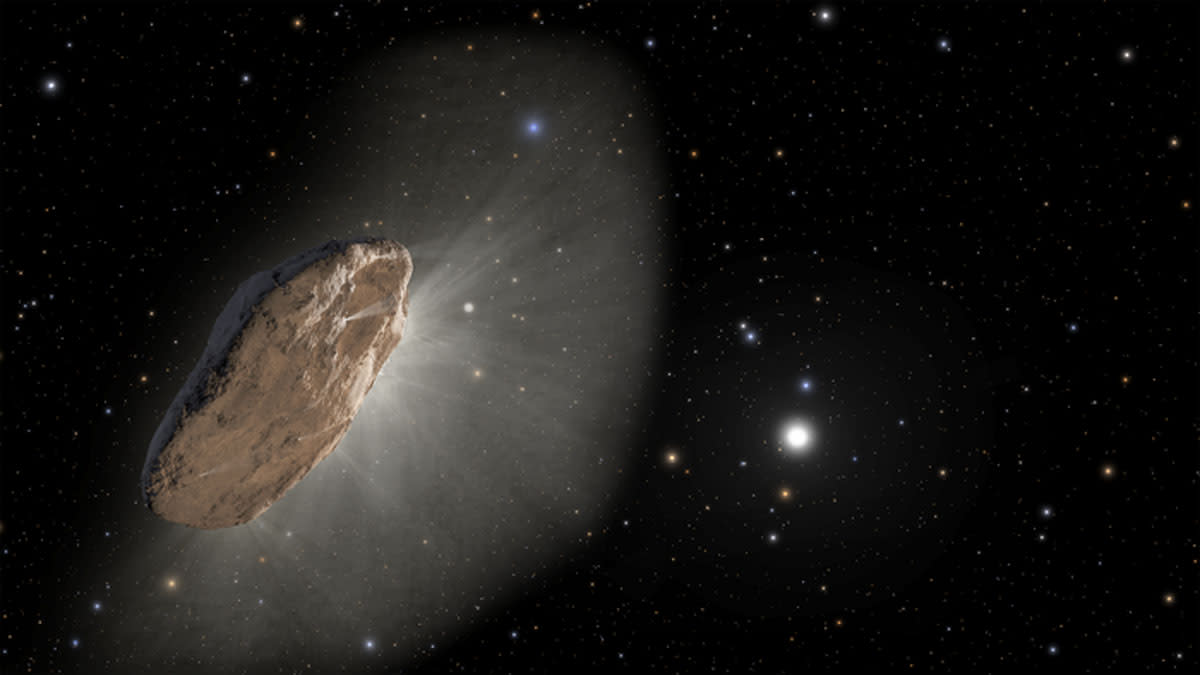Could the solar system be teeming with interstellar objects? We'll soon find out (op-ed)

How do you tell the difference between a spaceship and a space rock?
For astronomers like me, this question has proved tricky — so tricky that we were very nearly fooled when the first recorded interstellar object, named 'Oumuamua, was spotted passing through the inner solar system in 2017.
Astronomers once thought that any object moving under its own speed, with no visible means of propulsion, would have to be artificial technology. We knew how 'Oumuamua should behave if it were an interstellar space rock, or so we thought, but in every way it acted the exact opposite.
Related: 'Oumuamua: The solar system's 1st interstellar visitor explained in photos
As 'Oumuamua sped through the solar system, we only had a few weeks during which we were able to monitor it with our telescopes across the world. These observations showed that the object came from outside the solar system, and was extremely elongated and tumbling. 'Oumuamua displayed no comet-like tail but still moved under its own propulsion.
Comets also move under their own propulsion, but they display beautiful tails caused by dust and ice blown off their surfaces, which also causes a rocket-like recoil. 'Oumuamua was different. Its mysterious flight through our solar system sparked whispers of an artificial provenance. Some astronomers even called it Rama.
The true explanation, which we determined from its motion and the amount of energy it received from the sun, is just as strange: an entirely new kind of object. We call them "dark comets." Since we spotted 'Oumuamua, we have found a population of seven dark comets hiding among our solar system's asteroids. They get their name because they move like a comet, but display no dust tail.
Visitors from beyond the solar system — interstellar travelers — have long been predicted by science fiction writers like Arthur C. Clarke, but in reality, it's not so easy to identify what we're seeing — or just how many interstellar space rocks, or spaceships, are in Earth's neighborhood at a given time. This difficulty came to a head as we rushed to make sense of 'Oumuamua, but with new telescopes like the James Webb Space Telescope (JWST) and the forthcoming Rubin Observatory Legacy Survey of Space and Time (LSST) in the Atacama Desert in Chile, we'll have the tools we need to make sense of future interstellar travelers — and expand our understanding of the cosmos.
If only we'd had the JWST when 'Oumuamua was discovered, we would have been able to take more detailed images of the object and get information about how it looked in different wavelengths of light. By doing this, we could have better understood what was propelling it through space. We would have seen molecules like water or carbon dioxide that only show up at certain wavelengths and don't reflect sunlight. We routinely see normal solar system comets being propelled as their surfaces heat up and water and carbon dioxide ice transform into gas. We would have identified it immediately as a dark comet-like object. The good news is, if we spot another 'Oumuamua, we already have an approved JWST program to monitor it.
Related: James Webb Space Telescope (JWST) — A complete guide
RELATED STORIES:
— Could a spacecraft 'catch up' to interstellar visitor 'Oumuamua in just 26 years?
— 'Oumuamua origin story: How our mysterious interstellar visitor may have been born
— The Vera C. Rubin Observatory: New view of the universe
In the future, the JWST won't be the only powerful tool in our toolkit. The LSST, set to come online in the next year or so, should detect many more interstellar objects and be able to identify dark comets in our own solar system. Located in the Atacama Desert, a prime spot for viewing the heavens, the LSST will start scanning the entire Southern Hemisphere sky almost every night. The LSST will be able to spot much fainter objects than any of our surveys that currently monitor the entire sky for rapidly moving objects. It will be able to detect mysterious objects like 'Oumuamua that are dimmer, either because they are smaller or farther away from the Earth. The LSST will also be able to find many more smaller asteroids, and will be able to spot if they are dark comets and moving under their own propulsion.
It's possible that when the LSST makes first light, we will start detecting interstellar objects on a monthly — or even weekly — basis. Some of these may be dark like 'Oumuamua, and some may be brighter with beautiful tails, like the second interstellar comet, 2I/Borisov.
It may turn out that the sky close to the Earth is teeming with interstellar objects even smaller than 'Oumuamua, all of which were invisible up until now. These small interstellar visitors could quite plausibly be continuously whizzing through the Earth's neighborhood within the solar system. If that ends up happening, then the LSST might spot an interstellar target close enough for a dedicated space mission.
Close encounters with an interstellar visitor will no longer be a topic reserved for science fiction writers.
With the LSST and JWST, we have the tools to tell the difference between an intelligent visitor and an interstellar dark comet. Let's not get fooled.
Darryl Seligman is a research associate in the Department of Astronomy at Cornell University. His research focuses primarily on theoretical and computational planetary science and astrophysics.

